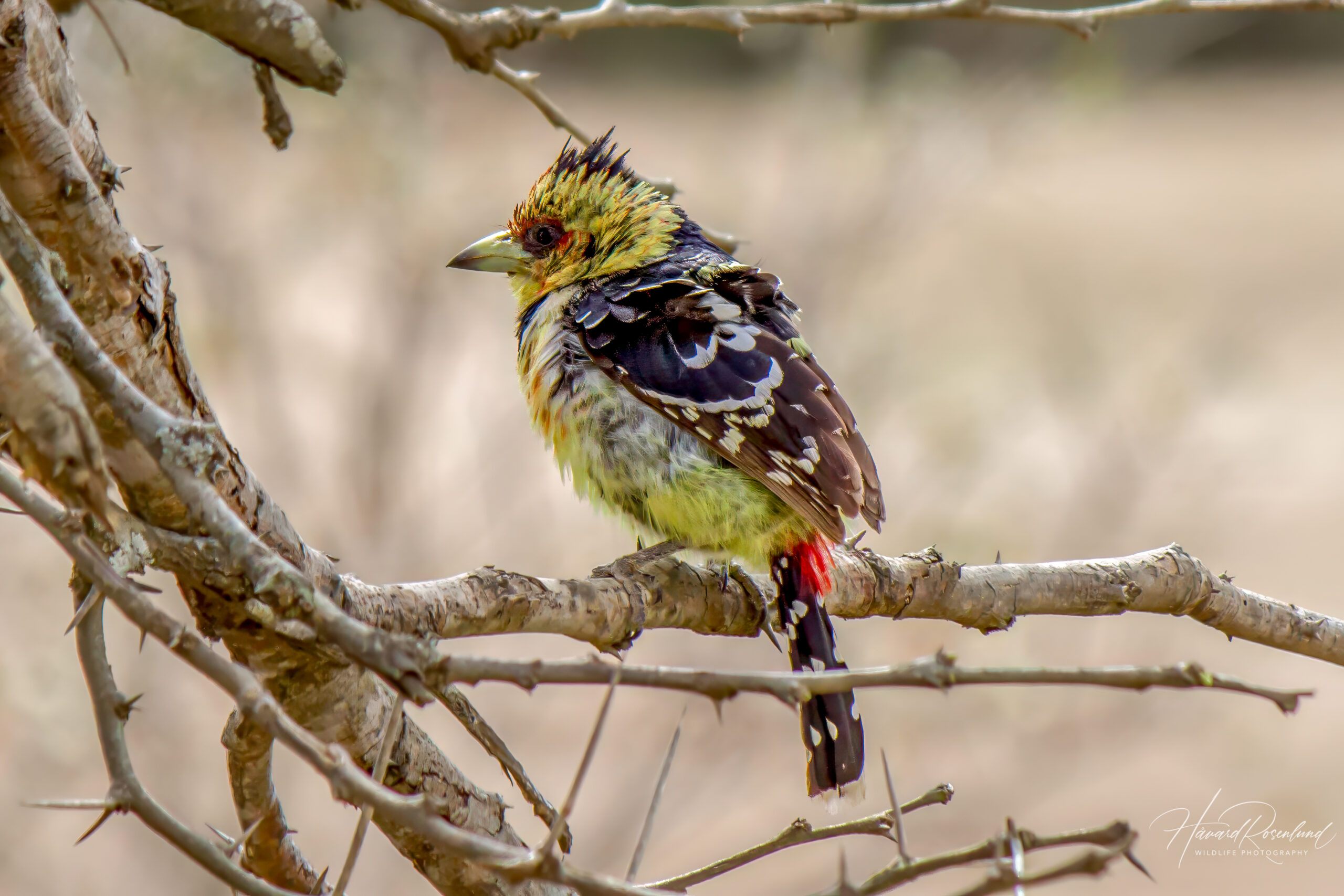Description
The crested barbet (Trachyphonus vaillantii), distinguished by its vibrant and multicolored plumage, is a stout barbet found predominantly in the woodlands and savannas of Sub-Saharan Africa, mostly south of the equator. It spans a size of about 20-25 cm in length, making it a noticeable presence in its habitat. Its unique features include a speckled yellow and red face with a prominent black crest, a thick bill, and a body adorned with black, white, yellow, and red patterns. It differs from similar species, like other barbets, through its more robust build, distinctive head pattern, and louder call. The crested barbet is known for its distinctive and melodic song, which can last for long periods, sometimes over an hour.
Diet & habitat
Crested barbets thrive in a variety of habitats, ranging from moist savannas and forest edges to gardens and urban areas. Their adaptability to different environments is noteworthy. They primarily feed on fruits, insects, and other small invertebrates. These barbets forage in trees and sometimes on the ground, using their stout bill to peck and extract food. They are also known to feed on the wing, catching insects in flight.
Nesting
The breeding season of the crested barbet varies with the location but generally coincides with the end of the dry season, leading into the wet season. They are monogamous birds and exhibit fascinating nesting behaviors, often opting to nest in tree cavities. These birds actively carve out their nesting holes or refurbish old ones. The incubation period for their eggs is about 13-15 days, and both parents partake in the incubation process. Fledglings are typically ready to leave the nest within a month, showing a rapid growth and development rate.
Status
The population size of the crested barbet is unknown, and it is believed numbers are declining. It is still a common, adaptable, and widespread species and there are no immediate threats. However, habitat loss and fragmentation, primarily due to agricultural expansion and urban development, pose potential risks. It is listed as least concern on the IUCN Red List.






